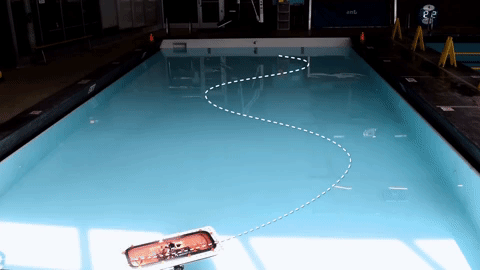
[Image above] Credit: Massachusetts Institute of Technology, YouTube
Driverless cars have been making news for the past couple of years now. And some experts predict that we will see nearly 10 million vehicles with self-driving features on the road at least by 2020.
So after the world finally embraces autonomous cars, what can we expect the next frontier to look like?
What about driverless boats?
Researchers at Massachusetts Institute of Technology’s Computer Science and Artificial Intelligence Laboratory (CSAIL) and the Senseable City Lab in the Department of Urban Studies and Planning have designed not one—but an entire fleet of driverless boats that could deliver goods and transport people to their destinations.
Oh, and did I mention they can be 3-D printed inexpensively?
“Imagine shifting some of the infrastructure services that usually take place during the day on the road—deliveries, garbage management, waste management—to the middle of the night, on the water, using a fleet of autonomous boats,” CSAIL director Daniela Rus says in an MIT news story.
And there is a lot of tech on board these 4 x 2 meter (13 x 6.5 feet) boats. They come with programmable sensors, microcontrollers, GPS, and other high-tech gadgets. According to the researchers, the boats could be “programmed to self-assemble into floating bridges, concert stages, platforms for food markets, and other structures in a matter of hours.”
(I’m envisioning a floating farmer’s market on several boats next to another boat that supports my favorite band playing in the background while I shop.)
The researchers began the “Roboat” project two years ago in a collaboration with the Amsterdam Institute for Advanced Metropolitan Solutions when they created an original prototype.
In this spiffed-up new and improved version, researchers streamlined the design and loaded it with more tech, including a power supply, Wi-Fi antenna, and advanced algorithms that improve the boat’s control for more precision docking. In fact, the researchers designed the boat so it could attach to other boats to create larger platforms.
The biggest overall improvement is that the boats can be 3-D printed quickly. It took nearly 60 hours for the researchers to print 16 sections that were joined together and sealed with layers of fiberglass.
The researchers tested the new prototype in a swimming pool as well as the Charles River, which was a little more challenging for the boat.
“We actually found that the Charles River has much more current than in the canals in Amsterdam,” joint postdoc in CSAIL and the Senseable City Lab Wei Wang says in the release. “But there will be a lot of boats moving around, and big boats will bring big currents, so we still have to consider this.”
The team continues to work to develop and improve the boat’s controllers for transporting various weights on waterways with stronger currents.
Autonomous boats could be advantageous in cities located on waterways, such as Amsterdam or Venice. They could also be helpful during hurricanes and the extreme flooding that have plagued coastal cities in recent years.
I’m sure we’ll be hearing more from this group in the near future.
Watch the video to see the autonomous boat in action!
Credit: Massachusetts Institute of Technology, YouTube
Want to read more articles like this? Subscribe to the Ceramic Tech Today newsletter to continue to receive the latest news in the ceramic and glass industry right in your inbox! Visit this link to get started.
